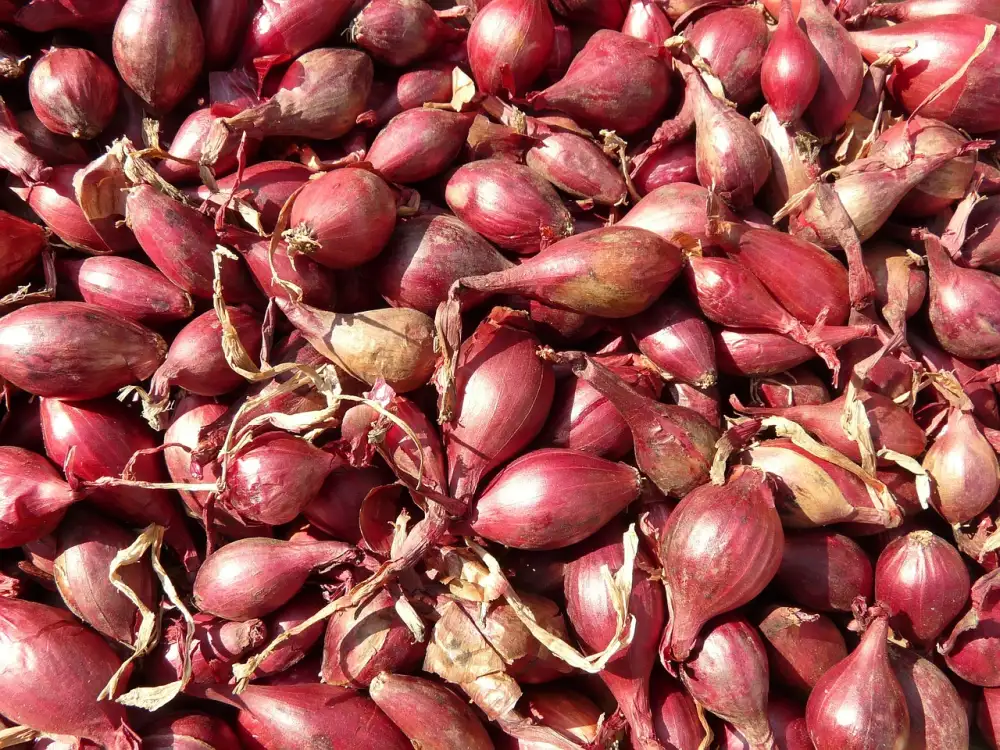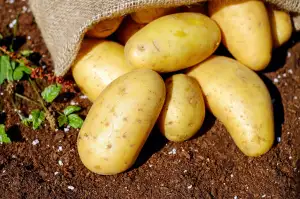Unveiling the Alluring Allium: A Closer Look at the Versatile Shallot

Shallots, a member of the allium family, are a versatile and flavorful ingredient that adds depth and complexity to dishes. With their delicate yet distinct taste, shallots have become a staple in many cuisines around the world. From French cuisine to Asian stir-fries, these small bulbs pack a punch in terms of flavor and aroma. In this article, we will delve into the origins, physical characteristics, nutritional value, culinary uses, health benefits, selection and storage tips, as well as popular recipes featuring shallots. Join us as we unravel the alluring allium that is the shallot.
Origins and History of Shallots
Shallots, with their delicate flavor and distinctive aroma, have a rich history that dates back centuries. Believed to have originated in Central or Southeast Asia, shallots were cultivated by ancient Egyptians as early as 2,000 BC. They were highly prized by the Greeks and Romans for their culinary and medicinal properties.
Shallots spread throughout Europe during the Middle Ages, becoming a staple ingredient in French cuisine. French chefs recognized the unique flavor profile of shallots and incorporated them into various dishes, elevating their status in the culinary world.
In addition to their culinary uses, shallots were also valued for their medicinal properties. Ancient civilizations believed that shallots had healing powers and used them to treat various ailments such as digestive issues and respiratory problems.
Over time, shallots made their way to other parts of the world through trade routes and colonization. Today, they are cultivated in many countries across the globe, including France, India, Thailand, and China.
The fascinating history of shallots is a testament to their enduring popularity and versatility in the kitchen. From ancient civilizations to modern-day cooking enthusiasts, these small bulbs have left an indelible mark on cuisines around the world.
Physical Characteristics of Shallots
Shallots, with their small and elongated shape, resemble garlic cloves but have a milder flavor. They are typically smaller than onions and have a reddish-brown or grayish skin. When peeled, shallots reveal multiple cloves that are arranged in layers, similar to garlic bulbs. The flesh of shallots is off-white to light purple in color and has a firm yet tender texture. Their delicate flavor adds a subtle sweetness and complexity to dishes, making them a popular choice among chefs and home cooks alike.
Nutritional Value of Shallots
Shallots not only add flavor to dishes but also offer numerous health benefits. These small bulbs are packed with essential nutrients, including vitamins A, B6, and C, as well as minerals like potassium and manganese. They are low in calories and fat while providing dietary fiber. Shallots also contain antioxidants that help protect against cell damage and reduce the risk of chronic diseases. Incorporating shallots into your diet can contribute to a well-balanced and nutritious meal plan.
Culinary Uses of Shallots
Shallots are a staple ingredient in many cuisines around the world, known for their delicate and sweet flavor. They can be used in various ways to enhance the taste of dishes. Shallots are commonly used in dressings, vinaigrettes, and sauces, adding depth and complexity to the flavors. They are also frequently used in stir-fries and sautés, as they have a milder taste compared to onions.
Due to their small size and mild flavor, shallots are often preferred over onions when it comes to making dishes like soups, stews, and curries. They can be finely chopped or minced and added to these dishes for a subtle onion-like taste without overpowering other ingredients.
Shallots can also be caramelized or roasted to bring out their natural sweetness. This process intensifies their flavor and adds a rich depth to dishes like roasted vegetables, meats, or even pizzas.
In addition to savory dishes, shallots can also be used in sweet recipes. Their unique flavor pairs well with fruits like apples or pears in tarts or compotes. Shallot-infused syrups can also be used to add a hint of sweetness and complexity to cocktails or desserts.
Overall, shallots offer versatility in the kitchen due to their delicate yet distinct flavor profile. Whether raw or cooked, they add an alluring touch to any dish and elevate its taste with their unique charm.
Health Benefits of Shallots
Shallots not only add flavor to dishes, but they also offer a range of health benefits. These small bulbs are packed with vitamins and minerals, including vitamin C, potassium, and iron. They are also rich in antioxidants which help protect the body against free radicals and reduce the risk of chronic diseases. Shallots have anti-inflammatory properties that can aid in reducing inflammation in the body. Additionally, they contain compounds that may help lower cholesterol levels and promote heart health. Including shallots in your diet can also support digestion and boost immune function. With their impressive array of health benefits, it's no wonder shallots have been valued for centuries both for their taste and their positive impact on overall well-being.
Tips for Selecting and Storing Shallots
When selecting shallots, look for ones that are firm and heavy for their size. Avoid shallots that have soft spots or signs of mold. The skin should be dry and papery, with a reddish-brown color.
To store shallots, keep them in a cool, dry place away from direct sunlight. They can be stored in a pantry or cupboard for up to three weeks. If you want to extend their shelf life, you can store them in the refrigerator in a paper bag or perforated plastic bag for up to two months.
Avoid storing shallots near other strong-smelling foods as they can absorb odors easily. If you have leftover cut shallots, wrap them tightly in plastic wrap or store them in an airtight container in the refrigerator for up to five days.
By following these tips, you can ensure that your shallots stay fresh and flavorful, ready to enhance your culinary creations.
Popular Shallot Recipes
1. Shallot and Mushroom Risotto: Sauté shallots and mushrooms in butter, then add Arborio rice and cook with vegetable broth until creamy. Finish with Parmesan cheese for a rich and comforting dish.
2. Grilled Shallot and Steak Salad: Marinate steak in a mixture of shallots, garlic, olive oil, and herbs. Grill to perfection and serve over a bed of mixed greens with a tangy vinaigrette.
3. Roasted Shallot and Garlic Soup: Roast shallots and garlic until caramelized, then blend with vegetable stock for a velvety soup. Top with croutons and fresh thyme for added flavor.
4. Shallot and Goat Cheese Tart: Spread caramelized shallots over puff pastry, top with crumbled goat cheese, and bake until golden brown. Serve as an appetizer or light lunch option.
5. Lemon Shallot Chicken: Sauté chicken breasts with minced shallots in olive oil until cooked through. Finish with lemon juice, zest, and fresh herbs for a zesty and flavorful main course.
These recipes showcase the versatility of shallots in various dishes, adding depth of flavor to elevate your culinary creations.
In conclusion, shallots are truly a versatile and alluring ingredient that adds depth and flavor to a wide range of dishes. Their rich history, unique physical characteristics, and impressive nutritional value make them a must-have in any kitchen. From French cuisine to Asian stir-fries, shallots bring a subtle sweetness and complexity that elevates the overall taste of a dish. Moreover, their numerous health benefits, such as boosting immunity and reducing inflammation, make them an excellent choice for those seeking to enhance their well-being through food. Remember to select firm and plump shallots when shopping, and store them in a cool, dry place for optimal freshness. Whether you're a professional chef or an avid home cook, exploring the world of shallots is sure to enhance your culinary adventures. So go ahead and embrace the allure of this remarkable allium – your taste buds will thank you!
Published: 29. 11. 2023
Category: Food



